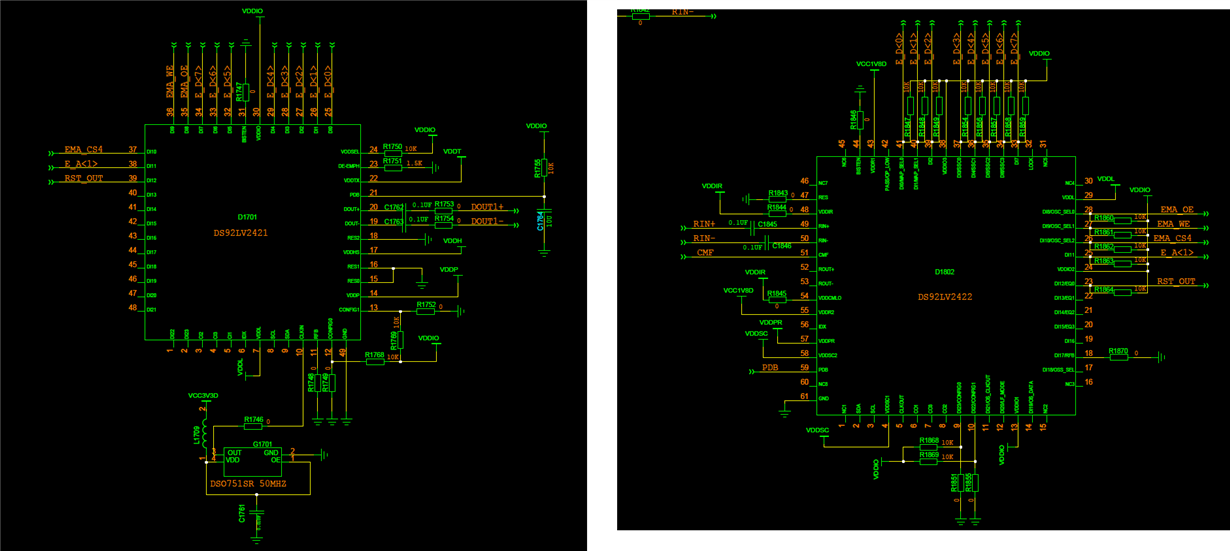Other Parts Discussed in Thread: DS92LV2422,
hi dear supporting team,
my customer is using DS92LV2421 and DS92LV2422 to transmit 2.78M LCD signal and other low speed control signal over 6m twist cable, below is their sch, could you help check whether anything wrong? the main questions are list as below:Tks a lot!
1、for 6m distance, besides LCD signal, they also conduct bluetooth IIS, serial port signal, and some normal low speed control signal(code switch), is it ok?
2、there are several IO port of 2421/2422 are not used, is it ok to float it? Could 2422 clkout be float?
3、how to config BISTEN、RFB、config、IDx?
4、LCD is running at around 2.8Mhz, couold they use 50M CLOCKin?
5、are these two chips close to EOL?


